by Irma Havlicek
Powerhouse Museum Online Producer

In order to do this, the site grid is being used to record all visible signs of ancient activity.
To get the most out of this post, you may want to read the posts about the grids, and also how the information gained is being digitally recorded onto tablets.
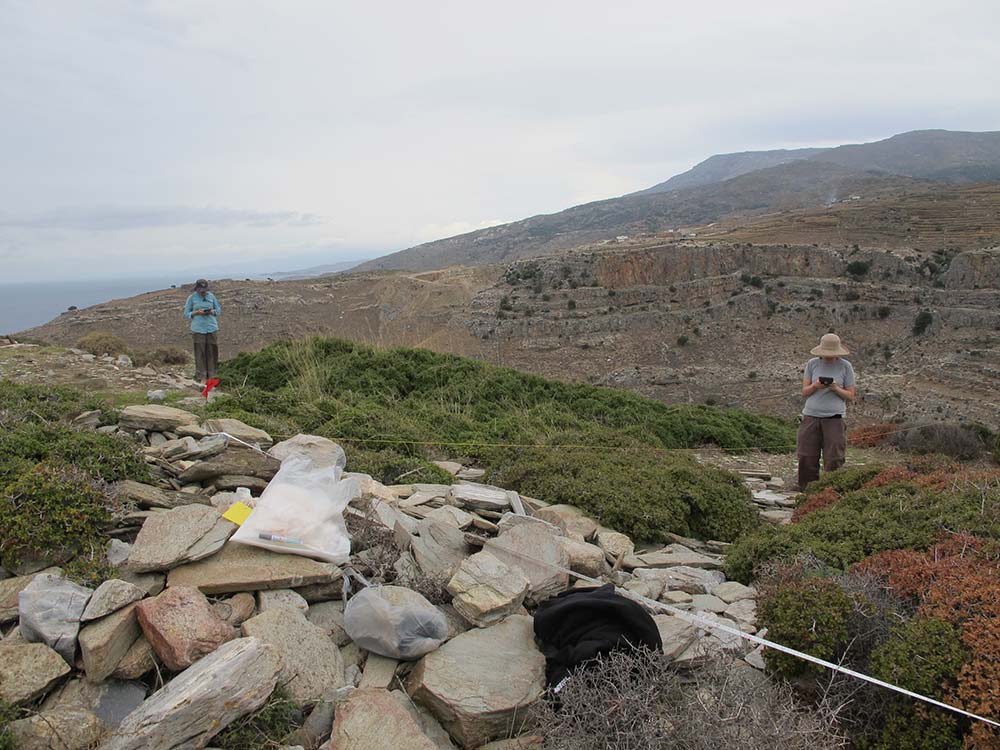
The team has been systematically walking the grids, usually in teams of two or three, looking at the ground to see if they can find evidence of human activity from the time of the settlement of Zagora, about 900 to 700 BCE.
They have been recording evidence of architectural remains and the presence of ancient pottery and other finds across the site including metal slag which represents the remains of industrial activity.

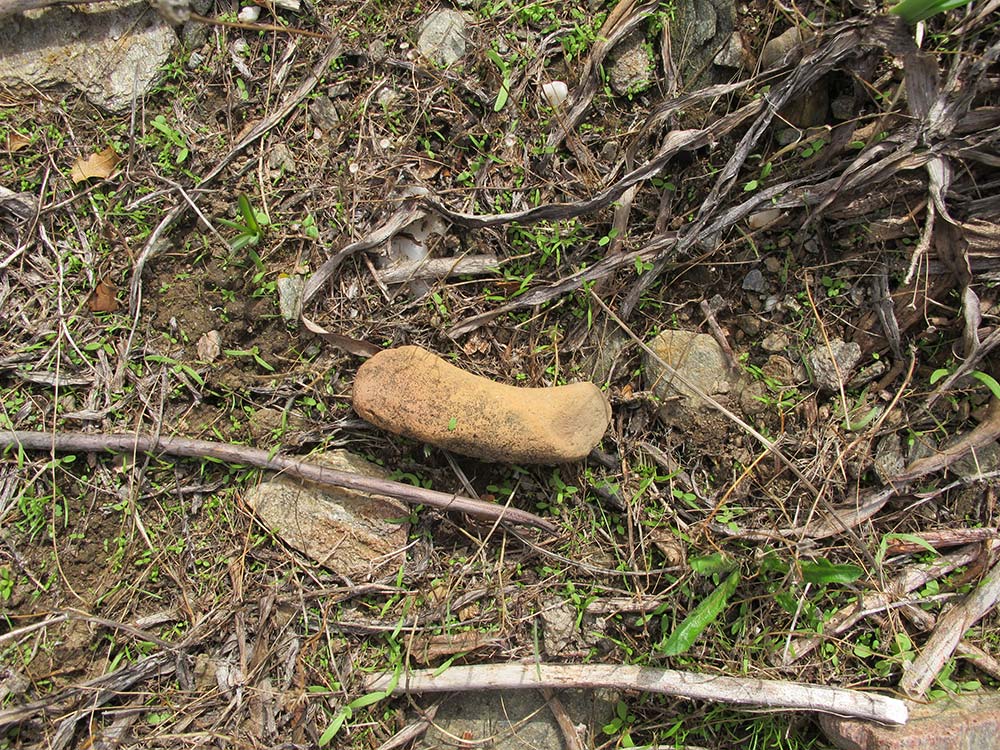
Most of the pottery found at Zagora is a terracotta colour. But there are also lighter coloured pieces which were probably imported, with the pale pinkish cream pottery possibly imported from Corinth.
Getting your eye in
Some of the sherds laying clearly on the ground surface were fairly easy to see right from the beginning. But many were alongside leaves and stones of very similar colour.
At the beginning, I frequently confused sherds and what the archaeologists call ‘tricky rock’ – stones that look very similar to sherds. But I pretty quickly got better at discerning the difference.
But when you ‘get your eye in’ and start to recognise what you are looking for, you seem to become sensitive to seeing artefacts wherever they are – they almost call out to you. A feeling of real excitement builds with every piece that you see. Especially when there are people around who can add meaning to some of the sherds noted. (And then there are others of our team at Andros Museum who know even more about them.)
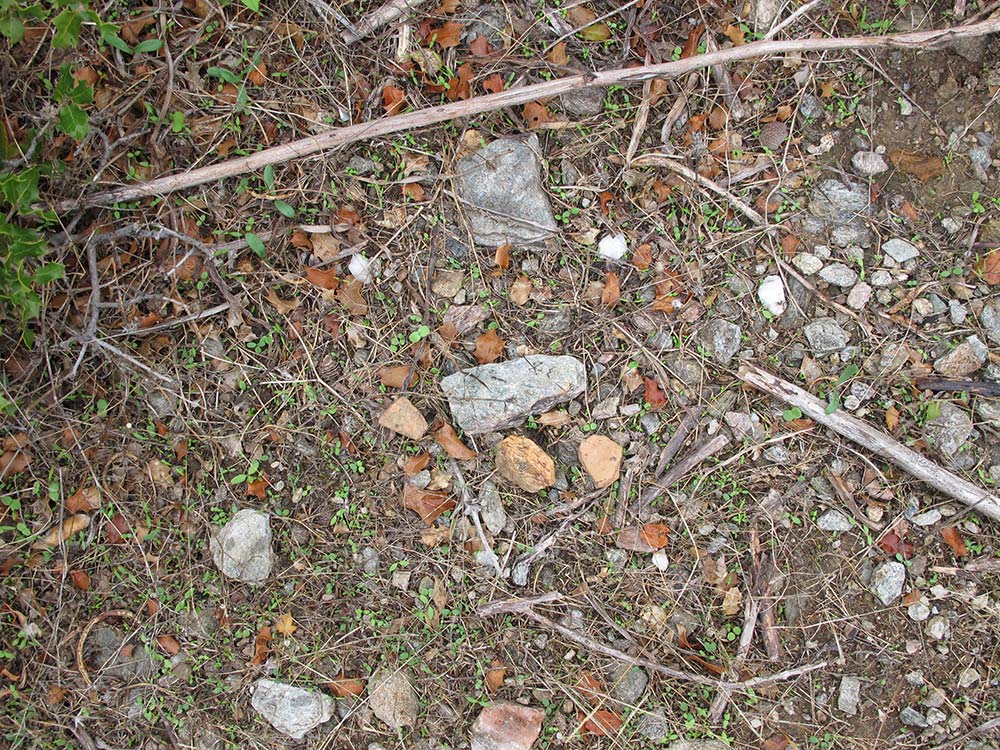
Each piece of ancient pottery is a treasury of ancient information. Here the treasure is archaeological, emotional, intellectual, historical, scientific and personal. You know that with each artefact fragment is a piece to the great jigsaw that is archaeology, and that is also our understanding of our past. You ask yourself: What was this object part of? Who used it? When and where? As part of what kind of activity – daily eating and drinking? Celebration? Ritual? Were they celebrating a birth or marriage, or mourning a death?
You hold a small rim, and wonder whose lips drank from it. Were they drinking from it in rooms we are yet to excavate, and from which excavation we may find out more about them?
Sometimes it is almost as though we can hear distant echoes of the sounds that would likely have taken place at Zagora – families dining together, laughter and talk, perhaps men at their metalwork and women at their weaving, children playing. Not so very different from us, in many ways.
By far the most common artefacts found at Zagora have been pottery sherds (fragments of pottery) laying on the ground, often having been pushed up as plants have grown up through the earth.
The reconnaissance teams are usually allocated by one of the project team leaders (Professor Margaret (Meg) Miller or Dr Lesley Beaumont) each morning, and change from day to day so we all get to work with different people.

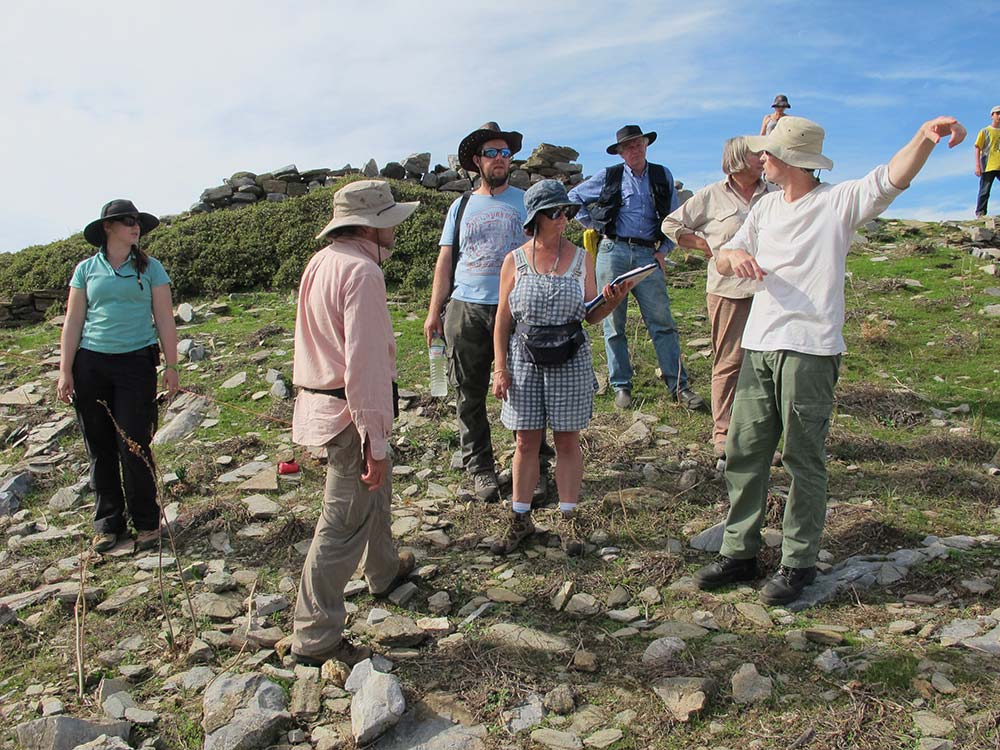
It is an amazing feeling being in the presence of the artefacts that had been used at Zagora almost three thousand years ago.
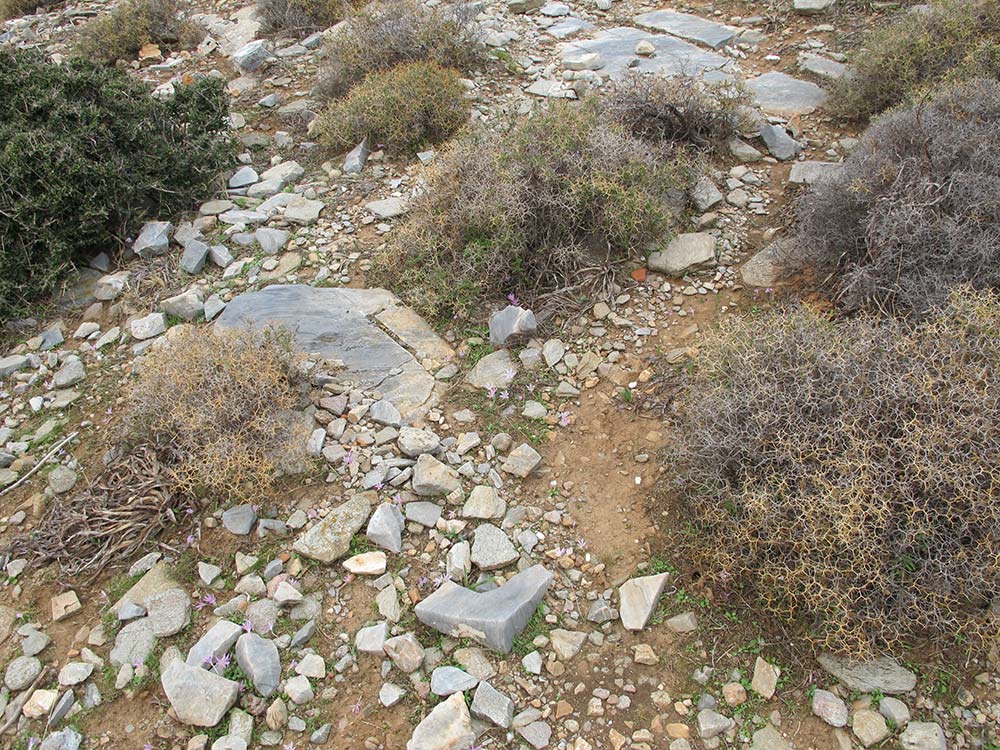
Part of my amazement of being able to handle these artefacts is caused by the fact that I have worked at the Powerhouse Museum for the last 20 years. In the museum world, when an artefact is in the collection of a museum, we are not allowed to touch it with our bare hands because the oils in our hands affects the material of the objects and can hasten the deterioration of objects. We handle museum objects with great care, wearing cotton or latex gloves, depending on the material of the object being handled.
To work on the site where people lived for hundreds of years, thousands of years ago, and to pick up with my bare hands pieces of objects they had used in their daily life had an enormous emotional impact on me.
All the more so because so often the archaeologists I was working with could tell me, from a small fragment of pottery, what kind of object it probably came from.
They could usually easily tell if it was a rim, a base, a handle or a general body fragment. They often had a good idea about what the object likely was. For example, if the fragment, even if small, was quite thick, it was likely from a large object like a pithos or a hydria. (More about these objects in our Artefacts found at Zagora page.)
Hydriae have three handles: two horizontally placed opposite each other, to carry the vessel when filled with water; there is also one handle placed vertically between the other two handles, which enables it to be carried more easily with one hand when empty or to use for pouring. If the join section of a hydria handle is present, an archaeologist can tell whether it is a horizontal or a vertical handle.
Slag
Slag is the material that is left over from the process of metal smelting. Finding slag is significant because it indicates that metal was smelted in the area. Finding pieces of slag even in low numbers indicates the type/s of metal that were manufactured at Zagora. Finding it in concentration may be an indication of an industrial area on the site which, if we find one, would provide further evidence about labour and commercial activity at Zagora.

Archaeologists are very serious about their work – but they also have a sense of fun about it. Whenever someone finds slag, there are whoops of excitement, and screams of ‘Slag! Slag! I’ve found some slag!’ And there was even the odd ‘Slag happy dance’ when slag was found. I just didn’t have my video camera on hand to record it. But you can probably imagine….
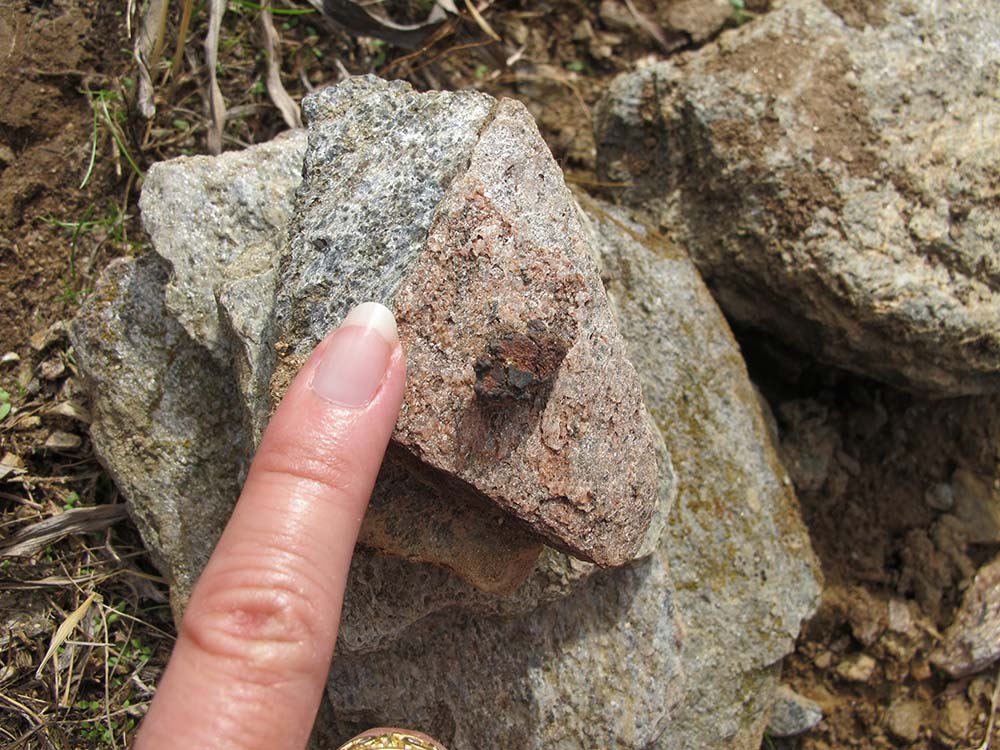
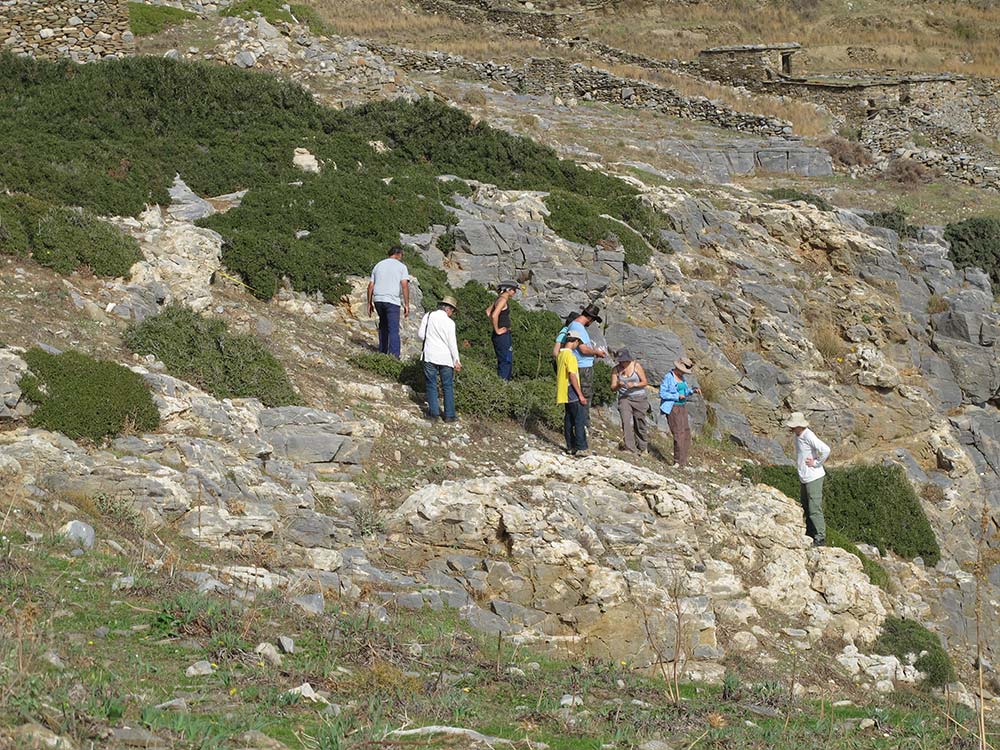
Obsidian
Obsidian is a glass-like rock, dark to black in colour, which was produced from cooled magma (lava). It was chipped around the edges to make sharp cutting tools for thousands of years. The ancients developed fine skills to know exactly where and how to chip obsidian to get strong and sharp edges.
Obsidian is used today by some surgeons as scalpel blades because the cutting edge is much sharper than that of high-quality steel surgical scalpels.
A few pieces of obsidian have been found at Zagora this season. (No, I haven’t found any. I think it takes a sharper eye than mine to find it. I haven’t yet ‘got my eye in’ for obsidian. But I keep looking and hoping….)
Sensitivity to materials
One thing I have learned is how sensitive archaeologist are – and need to be – to find and identify artefacts and sherds. They use several senses to help them in their task. Primarily, they use sight, looking to find artefacts and also looking to see size, colour, shape, texture, etc. But they also use touch – to feel the material of the item. Archaeologist training can include identification of sherds by touch alone. From this they can tell a great deal about, for example, the composition of the clay from which the object was fired. But they also feel for weight as well as texture.




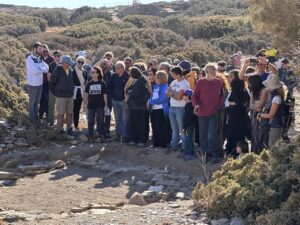
3 thoughts on “Archaeological reconnaissance”
I love the picture of Paul. He looks ready to eat the sherd…aren’t you carrying enough food out to site?
I think he might have missed out on his egg this day.